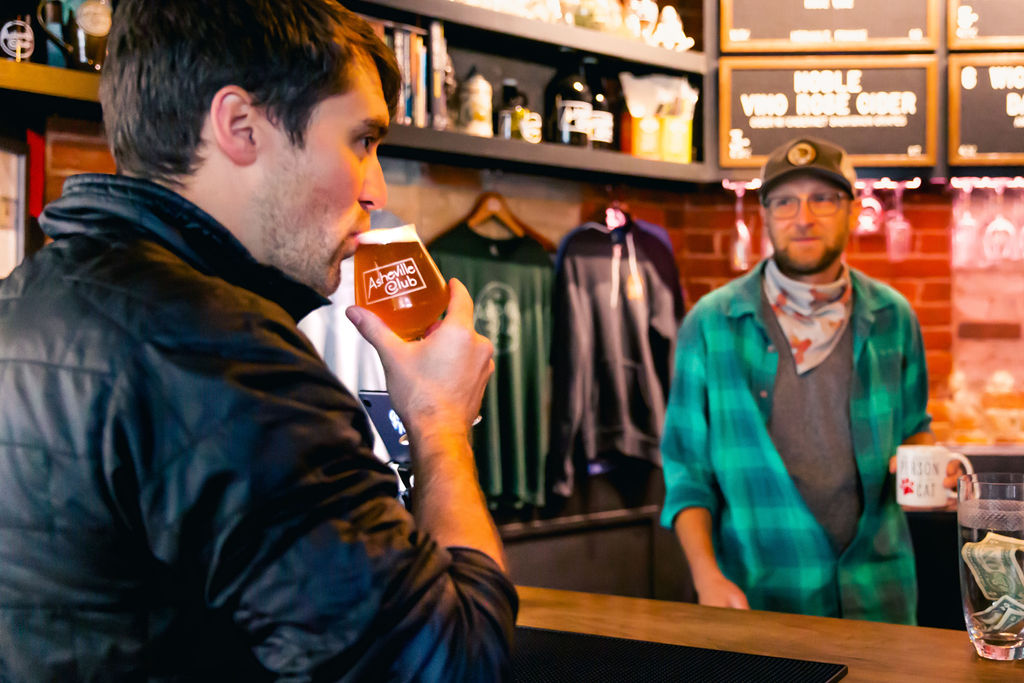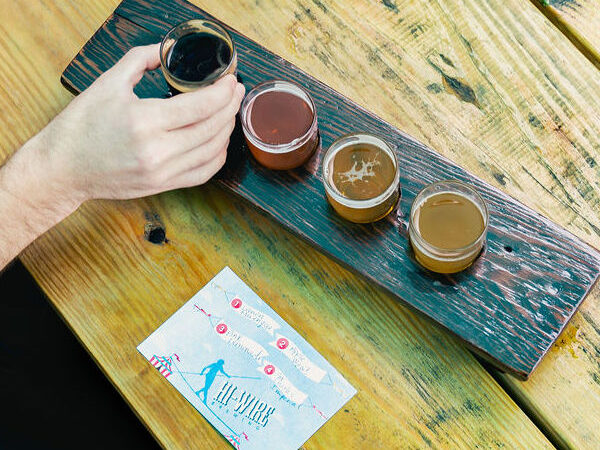Breweries, Taprooms, Brewpubs: What You Need To Consider When Pricing Beer Drafts & Bottles
What should you consider when it comes to both on and off premises pricing? Keep reading to find out!

Busy season for breweries is in full swing. And despite the pandemic being in the rearview mirror, the changing economy, rising costs, and how to react as a business is still very much in the forefront.
So when it comes to recovering some of your increased operating expenses in the form of higher menu prices, what should you consider when it comes to both on and off premises pricing? Keep reading to find out!
The State of the Beer Industry & Why Pricing Right Is Important
The beer industry is feeling the repercussions of inflation: Costs have increased significantly for packaging and transportation, and even big beer makers like Molson Coors have raised the prices of their popular offerings. In fact, beer prices are up 5.9% in the 12 months through April 2023.
Yet, beer has proven itself in the past to be recession-resistant. So although distilled liquor and wine are faring better than beer amid historically high inflation, you’ll see household staples in other drink categories like juice or carbonated beverages with double-digit increases above the overall inflation rate. And Danelle Kosmal, Vice President of Research at the Beer Institute, reiterates beer as a staple product in American households, too.
Good news, right? People clearly expect and accept that inflation will affect their beer drinking, which makes this discussion all the more crucial. Pricing your beer right means not leaving profits on the table, while also not scaring guests away with a steep price tag.
So, what all should you consider when pricing beer for on and off premise?
What To Consider When Pricing Your Beer
Your Business Type Determines Your Price Points
A bottleshop’s pricing will greatly differ from a taproom. Here are some key pricing considerations when thinking about your unique business type and how your goods are served:
- Packaging costs: We already discussed increased packaging costs, and you must account for them when pricing your canned and bottled beer.
- Overhead costs: Sure, draft beer doesn’t require additional packaging costs, but you do have to think about the labor costs involved in training staff to install and maintain your equipment and properly pour beer.
- Third-party sales: If you own a bottleshop or a taphouse and you’re selling another brewery’s beer, you want to keep their prices in mind. Selling someone else’s beer for too high or too low is a quick way to tarnish a relationship, and it’s not good for the longevity of your business.
Pricing Draft & Bottled Beer For On-Premise Sales
Draft Beer: Ensure Your Highest Profit Margins
Assuming your team stores, pours, and glasses your beer efficiently, draft beer sees the highest profit margins in a brewery. As mentioned though, draft beer also requires the most overhead.
Check out these resources if you’re interested in fine tuning your operations to maximize revenue:
- The Taproom Manager’s Role In Ensuring High Quality Operations
- Ensuring Superb Product Quality With the Help of Your Brewery POS System
The cost of managing your keg fleet is also a key consideration. Breweries historically lose 5-10% on their kegs each year, which can mean thousands of dollars lost. With the price and size of kegs varying by country, it’s also important to weigh the pros and cons of buying versus leasing your keg fleet. While leasing is incredibly convenient and buying demands a lot of maintenance, the investment might be beneficial for a long-standing brewery.
Lastly, your brewery should consider standardized pricing by pour size. Gregg Frazer from Stone Brewing claims that it’s “much nicer and cleaner to have tiered systems” and says that all drafts in their San Diego taproom come in a 5, 10, and 16 ounce pour.
If you’ve ever played the most ounces and ABV for lowest price game as a taproom guest, you know that it’s harder to make a decision if different styles have different pour sizes. Make it easy for indecisive guests and easy for bar staff with a tiered pricing system based on pour size.

Bottled Beer: Guest Perception Plays A Big Role In Pricing
Standard serving sizes and low overhead costs make bottled and canned beer more straightforward to price. The tricky part with selling bottled beer for on-premise consumption is guest perceptions.
You simply can’t beat a frothy head of beer in a chilled mug. There’s a universal prejudice drinking draft beer is better than canned, which means your on-site menu prices need to reflect that. Of course, it’s a tricky line to walk when you price bottles and cans for less because you don’t want to swing the prices so low that you discourage draft orders.
Pricing Canned & Bottled Beer For Off-Premise Sales
Pricing beer for retail is a whole different ball game. You’re selling for consumption outside of your own taproom, so you don’t have the power to positively influence guests’ experience drinking your beer. You’re relying on the liquid to do the talkin’, and the price point to do the selling.
Most distributors recommend a 30% markup for retail, and a 40% markup for specialty products. Single-item inventory falls in the middle with an 37% markup, but keep in mind the additional costs that go into offering those kinds of items, like a higher chance of breakage.
Now, if beers aren’t moving with your distribution partners, here are some strategies to consider:
- Discounts: Discounting beer that you need to get off the shelf is typically an effective tactic, but don’t rely too heavily on it. You don’t want guests to get used to buying your stuff on discount and certainly don’t want to cut into your bottom line. Instead, be mindful of the styles of beer you distribute—shelling out a bunch of Porters in the summer probably isn’t your best move.
- Inventory tracking: Tracking how quickly you’re selling your beer in various revenue streams is a job for some trusty technology. Check the inventory management partners your point of sale integrates with and save yourself the headache of maintaining your own spreadsheet.
Learn How To Stay Competitive & Revenue Positive With Beer Pricing
Now that you know everything you need to consider when pricing beer for on and off-premise, let’s put it to practice and slap some numbers on the menu board!
Learn about best practices for benchmarking in the webinar Pricing For Profit: Benchmark Your Beer with Patrick McDonald, The Beer Accountant!
And if you’re curious about creative ways to recover your increased expenses, check out how Dry Falls Brewing is on track to offset $38k in costs this year.
